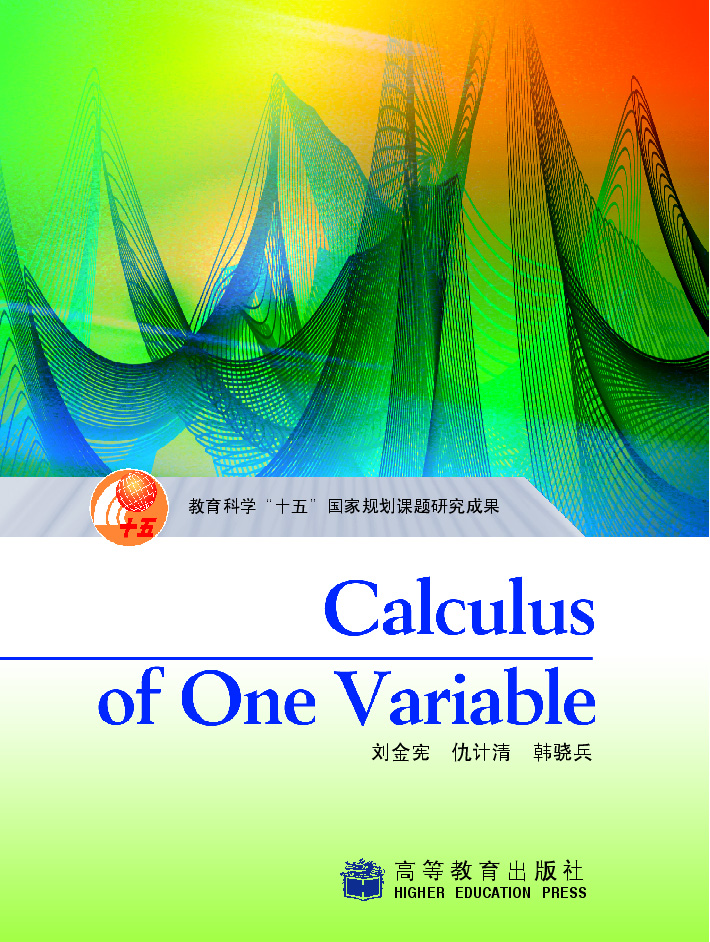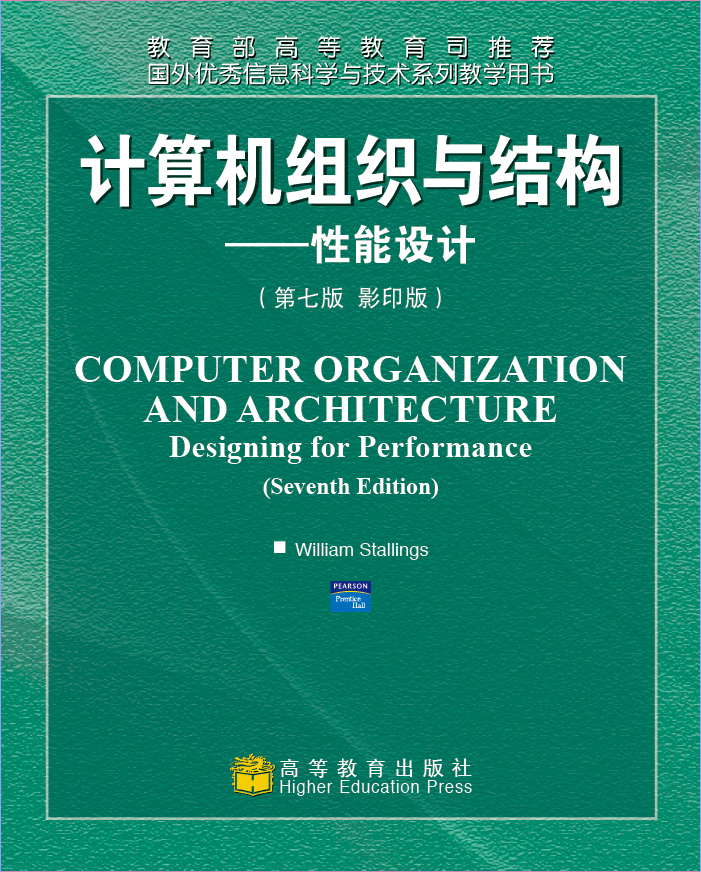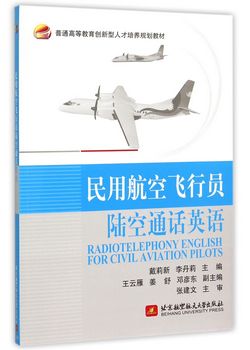Calculus of One Variable
作者: 刘金宪 仇计清 韩骁兵
出版时间:2003-08-26
出版社:高等教育出版社
- 高等教育出版社
- 9787040131024
- 1
- 297318
- 平装
- 16开
- 2003-08-26
- 320
- 265
本书是教育科学“十五”国家规划课题研究成果,对高等数学一元微积分部分做了较准确的、深入浅出的英文表述。内容包括函数与极限、导数与微分、中值定理与导数的应用、不定积分、定积分及其应用。数学专业知识与国内高校公共数学课程现行教学内容相当,专业技术符号系统与国内现行教学规范一致。分节配备了习题并附有答案。本书适合作为高等院校数学课程双语教学的配套教材,也可以作为科技英语专业数学课程的教科书,以及数学专业、信息与计算科学专业学科英语的阅读读物。
CHAPTERⅠ FUNCTIONS AND LIMITS
§1 Functions
1.1 Sets
1.2 Notion of a function
1.3 Properties of functions
1.4 Exercises
§2 Elementary Functions
2.1 Inverse functions
2.2 Inverse trigonometric functions
2.3 Composite functions
2.4 Five kinds of basic elementary functions
2.5 Elementary functions
2.6 Exercises
§3 Limits of Sequences
3.1 Sequences
3.2 Descriptive definition of limit of a sequence
3.3* Quantitative definition of limit of a sequence
3.4 Exercises
§4 Limits of Functions
4.1 Descriptive definition of limits of functions as x→x0
4.2* Quantitative definition of limits of functions as x→x0)
4.3* Quantitative definition of limis of functions as x→∞
4.4 Descriptive definition of limits of functions as x→∞
4.5 Left limit and right limit
4.6 Some theorems about limits
4.7 Exercises
§5 Infinitesimals and Infinities
5.1 Infinities
5.2 Infinitesimals
5.3 The order of infinitesimals
5.4 Exercises
§6 Operational Rules of Limits
6.1 Operational rules
6.2 Exercises
§7 Two Important Limits
7.1 Criteria of existence of limits
7.2 Two important limits
7.3 Exercises
§8 Continuity of Functions
8.1 Continuity of a function
8.2 Discontinuity points of a function
8.3 Exercises
§9 Operations of Continuous Functions
9.1 Operations of continuous functions
9.2 Continuity of elementary functions
9.3 Exercises
§10 Properties of Continuous Functions Over Closed Interval
10.1 Maximum and minimum values theorem
10.2 Intermediate value theorem
10.3 Exercises
CHAPTERⅡ DERIVATIVES AND DIFFERENTIALS
§11 Notion of Derivatives
11.1 Instantaneous velocity of a variable motion
11.2 Slope of a tangent line
11.3 Definition of a derivative
11.4 Several formulas of derivative
11.5 Geometric meaning of derivative
11.6 One-sided derivative
11.7 Differentiability and continuity
11.8 Exercises
§12 Derivation Rules
12.1 Constant times a function
12.2 Sums
12.3 Products
12.4 Quotients
12.5 Exercises
§13 Derivatives of Inverse Functions
13.1 Derivatives of inverse functions
13.2 Examples
13.3 Exercises
§14 Chain Rule
14.1 The chain rule
14.2 Examples
14.3 Derivative formulas
14.4 Exercises
§15 Higher Derivatives
15.1 Notion of a higher derivative
15.2 Physical interpretation
15.3 Exercises
§16 Derivatives of Implicit Functions
16.1 Implicit functions
16.2 Derivatives of implicit functions
16.3 Exercises
§17* Derivatives of Functions Represented Parametrically
17.1 Parametric representation of a function
17.2 The equations of some curves in parametric form
17.3 The derivative of a function in parametric form
17.4 Exercises
§18 Differentials of Functions
18.1 An introductive example
18.2 Concept of a differential
18.3 Geometric meaning of a differential
18.4 Formulas of differentials and operational rules
18.5 Exercises
CHAPTERⅢ MEAN VALUE THEOREMS
§19 The Mean Value Theorems
19.1 Rolle’s theorem
19.2 Lagrange’s theorem
19.3* Cauchy’s mean value theorem
19.4 Exercises
§20 L’hospital’s Rule
20.1 Indeterminate forms of the type00
20.2 Indeterminate forms of the type∞∞
20.3 Other indeterminate forms
20.4 Exercises
§21 Monotonicity
21.1 Conditions of increase and decrease
21.2 Regions of increase and decrease
21.3 Proofs of inequalities
21.4 Exercises
§22 Extreme Values
22.1 Notion of extreme values
22.2 Necessary condition
22.3 Sufficient condition
22.4 Exercises
§23 Applied Maxima and Minima
23.1 Absolute maxima and minima
23.2 Applied problems
23.3 Exercises
CHAPTERⅣ DRAWING GRAPHS OF FUNCTIONS
§24 Behaviors of Graphs
24.1 Behavior as x→∞
24.2 Regions of concavity and convexity
24.3 Inflection points
24.4 Exercises
§25 Drawing Graphs
25.1 Examples
25.2 Exercises
CHAPTERⅤ INDEFINITE INTEGRALS
§26 Antiderivative and Indefinite Integral
26.1 Concept of antiderivatives
26.2 Notion of indefinite integrals
26.3 Geometric meaning
26.4 Integration and differentiation
26.5 Basic formulas of integrals
26.6 Properties of indefinite integrals
26.7 Exercises
§27 The First Kind of Substitution
27.1 The formula of the first substitution
27.2 Examples
27.3 Exercises
§28 The Second Kind of Substitution
28.1 An introductive example
28.2 The formula of the second kind of substitution
28.3 Examples
28.4 Exercises
§29 Integration by Parts
29.1 The formula of integration by parts
29.2 Examples
29.3 Exercises
§30 Rational Functions
30.1 Examples
30.2 Exercises
CHAPTERⅥ DEFINITE INTEGRALS
§31 Notion of Definite Integrals
31.1 Area of a curvilinear trapezoid
31.2 Distance travelled by a variable motion
31.3 Definition of the definite integral
31.4 Geometric meaning
31.5 Examples
31.6 Exercises
§32 Basic Properties of Definite Integrals
32.1 Basic properties
32.2 Examples
32.3 Exercises
§33 Newton-Leibniz Formula
33.1 A function of upper limit of integral
33.2 The Newton-Leibniz formula
33.3 Exercises
§34 Substitution Method
34.1 A formula of substitution
34.2 Examples
34.3 Exercises
§35 Integration by Parts
35.1 The formula of integration by parts
35.2 Examples
35.3 Exercises
§36 Improper Integrals
36.1 Over infinite intervals
36.2* For unbounded functions
36.3 Exercises
CHAPTERⅦ APPLICATIONS OF INTEGRALS
§37 Areas of Plane Figures
37.1 In rectangular coordinates
37.2* In polar coordinates
37.3 Exercises
§38 The Volume of a Solid of Revolution
38.1 Representation of the volume by integrals
38.2 Examples
38.3 Exercises
§39 Volume of a Solid with Known Parallel Sections
39.1 Representation of the volumes by integrals
39.2 Examples
39.3 Exercises
§40 Length of Plane Curves
40.1 The case of rectangular coordinates
40.2 The case of parametric form
40.3 Exercises
§41* Work Done by Variable Force
41.1 Expressing the work by integrals
41.2 Examples
41.3 Exercises
APPENDICES
(Ⅰ)Polar Coordinates System
(Ⅱ)Integral Table
ANSWERS TO EXERCISES
INDEX
REFERENCES







